Ilbeonji Gopchang Yangdaechang - Myeongdong Branch (일번지양대창 명동)
676.8M 2021-03-19
33, Myeongdong, 9, Jung-gu, Seoul
+82-2-773-3150
This is a Korean cuisine located in Myeong-dong, Seoul. A restaurant specializing in Korean-style grilled intestines. The representative menu is grilled beef small intestine.
Minsokchon (민속촌)
676.8M 2021-08-06
33, Myeongdong, 9-gil, Jung-gu, Seoul
+82-2-779-8371
A place where you can try various Korean dishes. This restaurant's signature menu is grilled strip loin. This Korean dishes restaurant is located in Jung-gu, Seoul.
Jirisan Restaurant (지리산)
677.4M 2019-08-01
30, Insadong 14-gil, Jongno-gu, Seoul
+82-2-723-4696
Jirisan is one of the representative Korean restaurants in Insa-dong, an area known for its traditional culture. One of the trademarks of this restaurant, besides its amazingly delectable bean and tofu dishes, is a wooden sign that welcome guests into a neat and cozy interior.
Each day, fresh beans are ground at the restaurant to prepare dishes such as soybean paste, soft tofu, and bean-curd tofu stew. Bean-curds are prepared by using seawater, which gives the tofu a unique flavor. The fresh and clean taste of the tofu is one of the many reasons that choosey tofu aficionados flock to the restaurant.
Not just limited to tofu, Jirisan presents customers with a full-range of side dishes such as kimchi, japchae (glass noodles with sautéed vegetables), cucumber kimchi, seasoned seaweed, braised lotus roots, roasted yellow corbinas (a type of fish), leafy greens, bean-curd stew, and more. The restaurant gives visitors a chance to experience a hearty traditional Korean-style meal, but has thoughtfully toned down its seasonings to appeal to a wider audience (particularly those not used to spicy foods).
One of the recommended menu items is the Jirisan set meal, which offers diners the chance to sample foods that are popular in the Jirisan region. Adventurous diners may want to try the sea urchin soup or dried Pollack soup.
The restaurant, originally a traditional Korean house, has been modified over the years to better suit the needs of its customers. The walls surrounding the structure were removed and a glass ceiling was installed to allow guests to enjoy the natural light of the sun as they sample some of the area’s best traditional Korean cuisine.
Sieunjae [Korea Quality] / 시은재 [한국관광 품질인증]
681.9M 2021-04-01
439, Samil-daero, Jongno-gu, Seoul
+82-10-5355-3029
Located in Gyeongun-dong, Jongno-gu at the very heart of Seoul, Sieunjae is a hanok with a longstanding tradition. It has three guestrooms including the anbang (main room), byeolchae (detached building), and jakeunbang (small room). The anbang is the only room with a living room, where various items of old furniture, including a comfortable sofa, create an antique atmosphere. The communal bathroom and toilets are supplied with toiletries, while the communal kitchen is equipped with cooking equipment and a washing machine.
The house can be rented either as individual accommodations or in its entirety. As it is situated in Jongno-gu, at the very heart of Seoul, guests can easily reach many nearby major tourist attractions. Car users are advised to use the public parking lot as the house has no parking spaces. Entering by a small gate, the little flowerbed comes into sight. This old hanok shows traces of repair works on the tiled roof.
ILMIRI Gold Jjimdak Myeongdong(일미리금계찜닭 명동)
683.9M 2020-10-30
2,3F, 21, Myeongdong9ga-gil, Jung-gu, Seoul
+82-2-3789-0220
This is a Korean cuisine located in Myeong-dong, Seoul. The representative menu is braised chicken. A restaurant where you can experience the Korean chicken cooking culture.
Porte Gwanghwamun (광화문)
685.3M 2022-12-14
161, Sajik-ro, Jongno-gu, Seoul-si
+82-2-3700-3900
Gwanghwamun est la porte principale du Palais Gyeongbukgung, fondé en 1395, par le premier empereur de la dynastie Joseon, Taejo.
C’est la porte du sud parmi les quatre portes de la capitale sud-coréenne. Son nom signifie “Que la Lumière de l’Illumination recouvre le Monde!” et elle porte le but profond que les gens qui ont fondé la dynastie Joseon avait, en créant une nouvelle dynastie.
La Porte Gwanghwamun a été construite de granite. Au centre, il y a une entrée ressemblant à un arc-en-ciel, appelée Hongyemun, et au-dessus, se trouve la tour de la porte. La Porte Gwanghwamun renferme un souvenir douloureux dans l’histoire de la Corée. Durant l’ occupation japonaise de la Corée, de façon à tuer les esprits des citoyens coréens, le général du gouvernement japonais avait détruit la porte et construit son propre bâtiment gouvernemental. L’apparence réelle de la porte est celle de 1968 lorsqu’elle a été reconstruite en utilisant du béton, et elle est située environ à 10m derrière le point d’origine. Pour restituer la forme d'origine de la porte, le gouvernement a entrepris des travaux d'aménagement à partir de 2006, ces travaux se sont terminés le 15 août en 2010.
The Westin Chosun (Seoul) (웨스틴 조선 호텔-서울)
685.6M 2021-06-07
106, Sogong-ro, Jung-gu, Seoul
The Westin Chosun is situated in the heart of the business and shopping center of Seoul, where the embassies, banks, and government offices are also located. In 1999 and 2003, the Westin Chosun was selected as one of the world's top 100 hotels by international financial institutional investors, boasting newly renovated state-of-the-art facilities and rooms, and great service.
The hotel has a health center including a swimming pool, spa, and gym; a business center, conference rooms in various sizes, and restaurants. The Westin Chosun also manages a banquet hall service with food catered from Gangnam's COEX food courts.
The hotel provides the finest business environment, offering a cutting-edge facility holding guestrooms with desktop PCs, high-speed internet connections, TV internet, fax machines, printers, copy machines, automatic climate control, mini bars, and a 24-hour room service to accommodate to guests' every need. The VIP rooms come furnished with 'Heavenly Beds' guaranteeing the best of comfort.
SUSHI CHO (스시조)
685.6M 2021-03-29
106, Sogong-ro, Jung-gu, Seoul
+82-2-317-0373
This store was selected for the Michelin Guide Seoul 2021. This Japanese (cuisine) restaurant is located in Jung-gu, Seoul. The most famous menu is sushi.
Le Parc Tapgol (서울 탑골공원)
688.7M 2021-08-05
99, Jong-ro, Jongno-gu, Seoul-si
+82-2-731-0534
Aussi connu sous le nom de Parc de la Pagode, le Parc Tapgol, situé sur le site de l'ancien Temple Weongaksa de la Période Joseon, est le premier parc moderne à avoir été construit à Séoul. Le temple fut appelé Heungboksa sous la Dynastie Goryeo mais fut renommé durant les premières années de Joseon. Cependant, il fut détruit pendant le règne de Yeonsangun et Jungjong en raison d’une politique de repression envers le Bouddhisme. Par la suite, un parc de style occidental fut construit sur proposition de l’anglais John Mcleavy Brown, mais aucune information concernant la date et la raison n’a pu être trouvée. Le parc contient plusieurs trésors nationaux : Wongaksaji Sipcheungseoktap, Weongaksabi, et Palgakjeong où la déclaration d’indépendance fut lue, la plaque en relief du mouvement d’indépendance, ainsi que la statue de Son Byeong-hee. Le parc est d’une grande valeur historique et d’esprit national puisqu’il fut le point de départ de la Manifestation pour l’Indépendance, le 1er mars 1919.
Magasins d'instruements Nakwon Sangga 낙원 악기상가
689.6M 2018-07-03
Seoul, Jongno-gu, Samildae-ro 428
02-743-6131
Les magasins d'instruments 'Nakwon Sangga', situés près du quartier traditionnel d'Insadong, ont vu le jour dans les années 1970. Il s'agit d'une grande surface spécialisée dans la vente d'instruments, de partitions, d'équipements audio etc où les clients peuvent recevoir les conseils d'expert. Il s'agit d'une des plus grandes surfaces du genre dans le monde. On peut y trouver de nombreux magasins de guitares, toutes sortes d'instruments à cordes, des batteries, des amplis, des effets etc. La surface propose aussi des instruments d'occasion et des services de réparation.
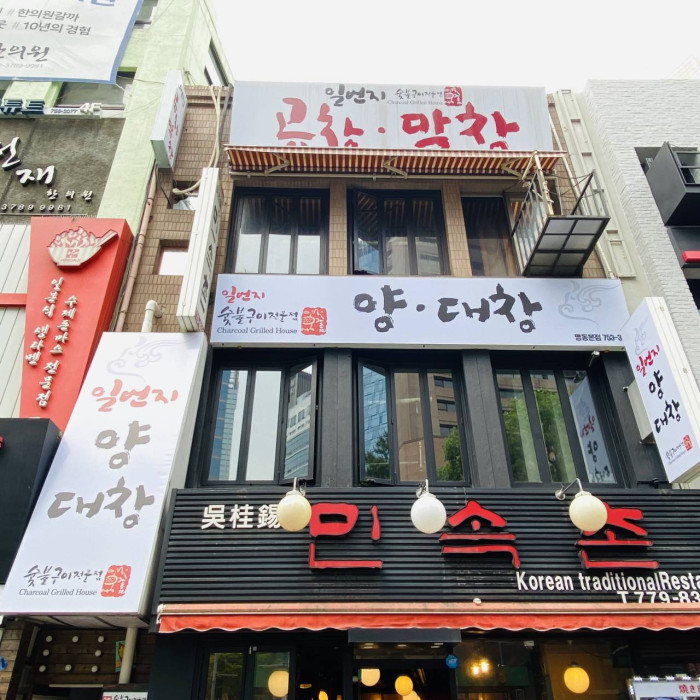
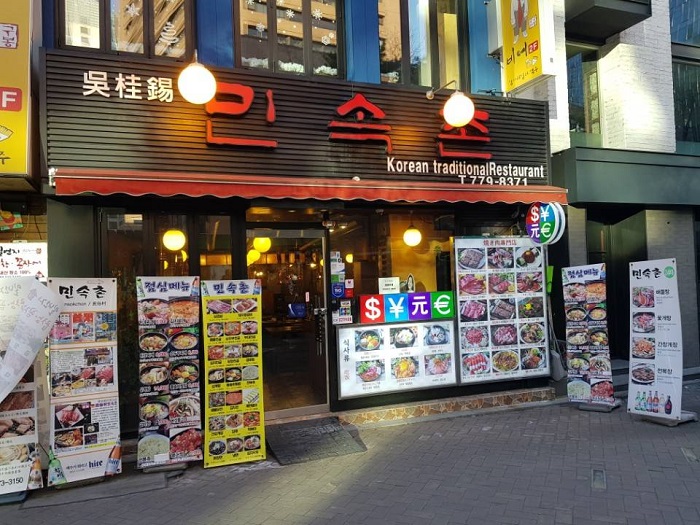
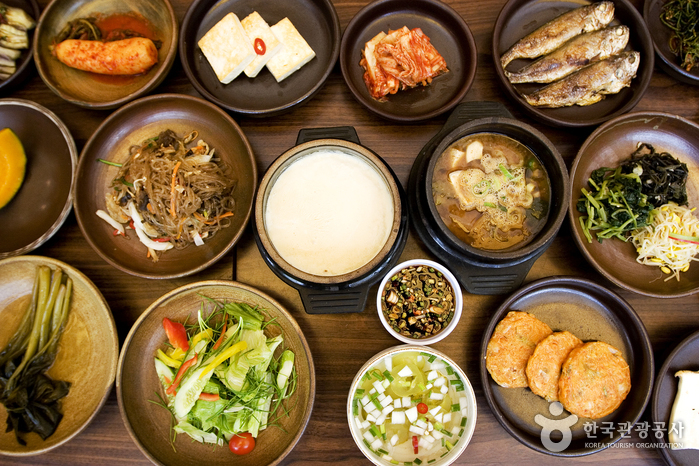
![Sieunjae [Korea Quality] / 시은재 [한국관광 품질인증]](http://tong.visitkorea.or.kr/cms/resource/51/2447351_image2_1.jpg)
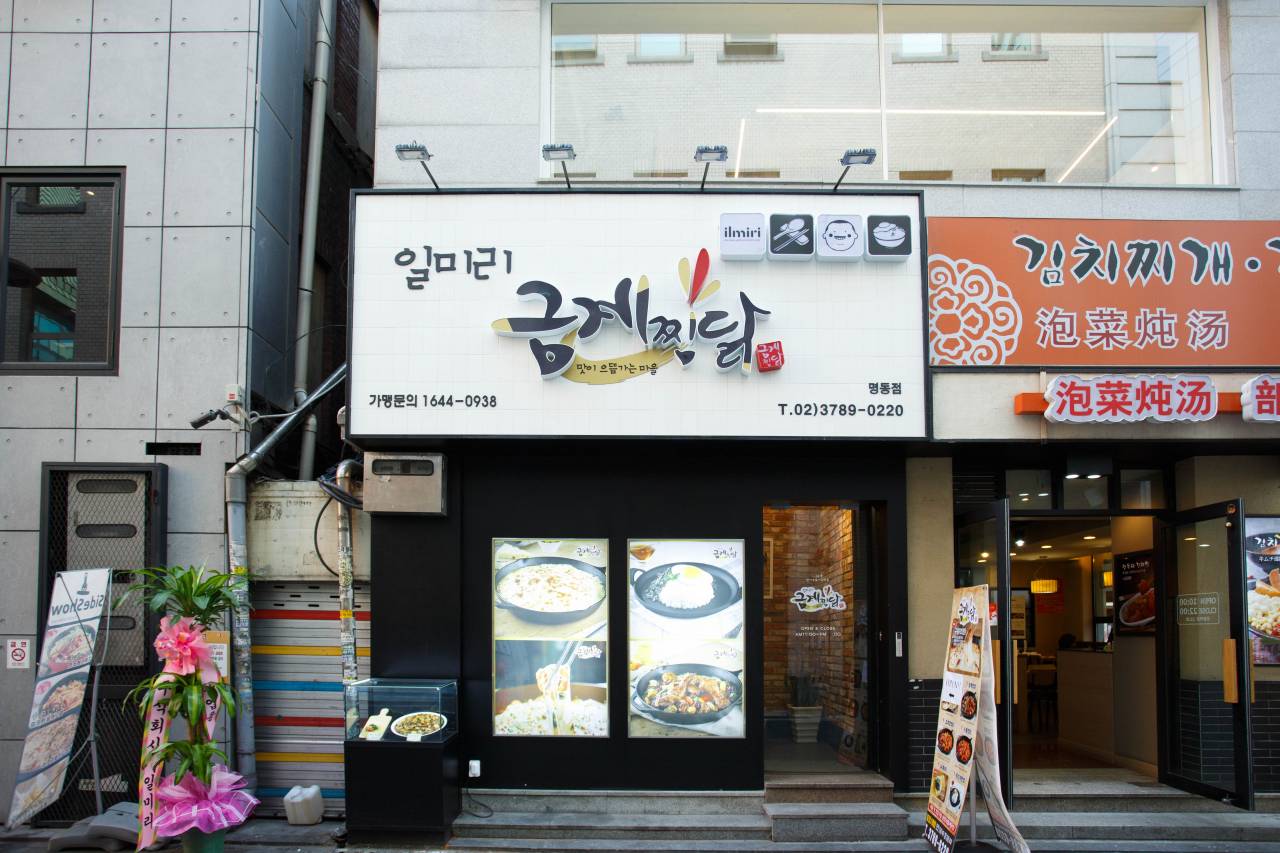

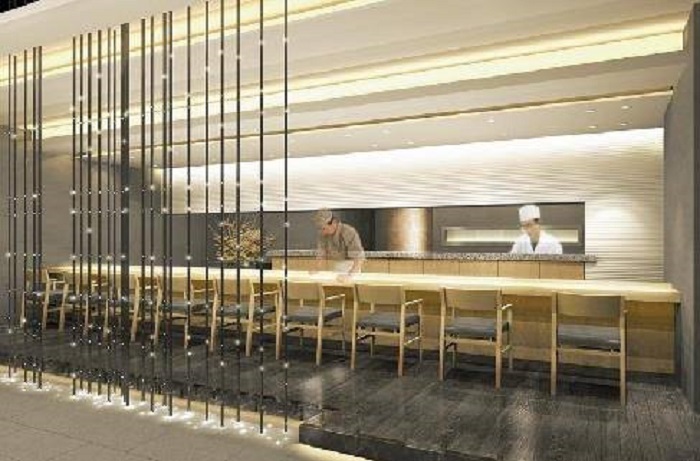
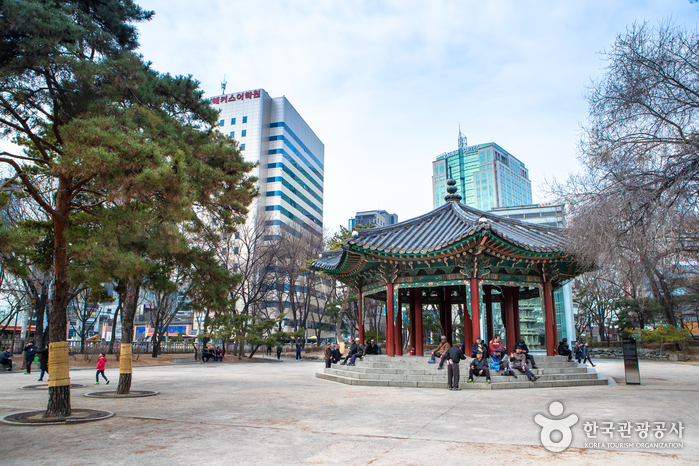
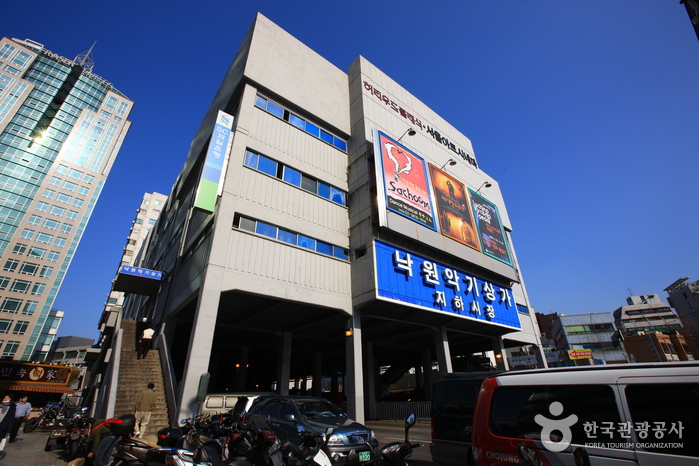
 Français
Français
 한국어
한국어 English
English 日本語
日本語 中文(简体)
中文(简体) Deutsch
Deutsch Español
Español Русский
Русский